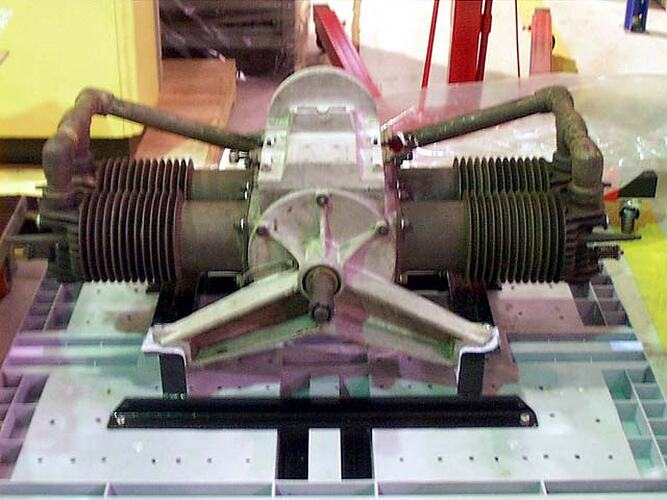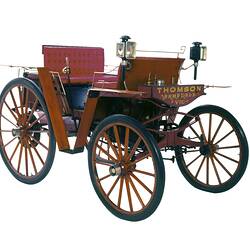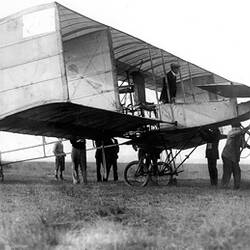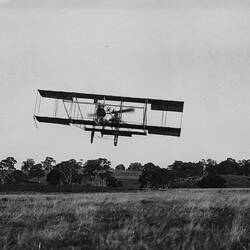Summary
This four-cylinder, horizontally-opposed engine is one of the earliest aero engines to be built in Australia. It was designed and built by two young motor mechanics, Azor D. Robbins and Aubrey Keith Lock. Robbins was employed at Dalgetys Garage in Bourke Street, Melbourne while Lock was an apprentice with Herbert Thomson's Steam Car Company in Armadale. They had been approached to build a 50 horsepower (37 kW) aero engine by Lawrence Marshall, a Melbourne inventor who was building a biplane to compete for a Commonwealth government prize of £5,000 for a military aeroplane. Lock and Robbins worked on the engine part-time in Richmond and subsequently at the Dalgety's engineering shop in Melbourne. A total of forty cylinders were believed to have been cast by an outside foundry from which the four best were selected. Despite this, the cylinders fractured during a bench test and Marshall refused to pay for the engine as it did not deliver the promised 50 horsepower.
It was later repaired by Lock and acquired by Azor Robbins and a business partner Alex Porter, who had built a Bleriot-type monoplane in Albury, New South Wales. Robbins and Porter had moved to Albury from Melbourne in 1911 opening their own automotive business at 532 Kiewa Street. The engine was reported to have been displayed at the 1912 Albury Show. Their aircraft is believed to have made several short flights in July 1913. The aircraft was subsequently sold to Blacklock's Garage in Dean Street Albury where it was later destroyed in a fire. The engine was salvaged by Aubrey Lock who kept it at his Melbourne house until his death in 1966. It was donated to the Museum, in pieces in 1978. Since then it has been reassembled and conserved to retain as much of the original finish and components as possible. The basic horizontally-opposed layout of this engine is still used by most light aircraft today.
More Information
-
Collecting Areas
-
Acquisition Information
Donation from Mr Donald McKenzie Shanks, 28 Apr 1978
-
Maker
Mr Aubrey K. Lock, Melbourne, Greater Melbourne, Victoria, Australia, 1910-1911
-
Other Association (See Comments)
Mr Herbert Thomson, Melbourne, Greater Melbourne, Victoria, Australia, circa 1910
Aubrey Lock was an apprentice of Herbert Thomson, Engineer. Thomson built the Thomson Steam Car - see ST 024990. -
Classification
Air transport, Aero engines, Reciprocating propeller engines
-
Category
-
Discipline
-
Type of item
-
Overall Dimensions
1040 mm (Width), 600 mm (Depth), 420 mm (Height), 80.5 kg (Weight)
Weight provided in 2002 conservation report
-
Dimensions
105 cm (Length), 60 cm (Width), 49 cm (Height)
Measurement From Conservation. ERROR:height:1=Wt: 80.5kg Measuring Method: Main assembly (engine case, cylinders, intake manifold)
-
References
-
Keywords





